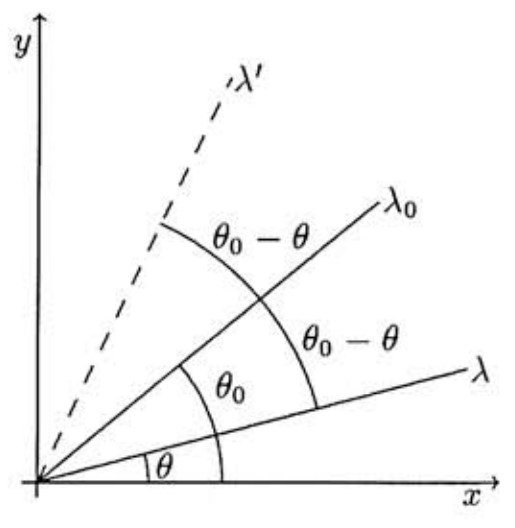Problem:
Lines and both pass through the origin and make first-quadrant angles of and radians, respectively, with the positive -axis. For any line , the transformation produces another line as follows: is reflected in , and the resulting line is then reflected in . Let , and for integer define . Given that is the line , find the smallest positive integer for which .
Solution:

Let and be lines through the origin making angles of and , respectively, with the positive -axis. When is reflected in , the resulting line makes an angle of
with the positive -axis. Thus, if is reflected in , then the result is a line that passes through the origin and makes an angle of with the positive -axis. Reflecting in the line gives a line through the origin that makes an angle of
with the positive -axis. Thus is obtained by rotating through radians and is obtained by rotating through radians. For to hold, must be an integer. The smallest positive integer value of for which this is true is .
The problems on this page are the property of the MAA's American Mathematics Competitions